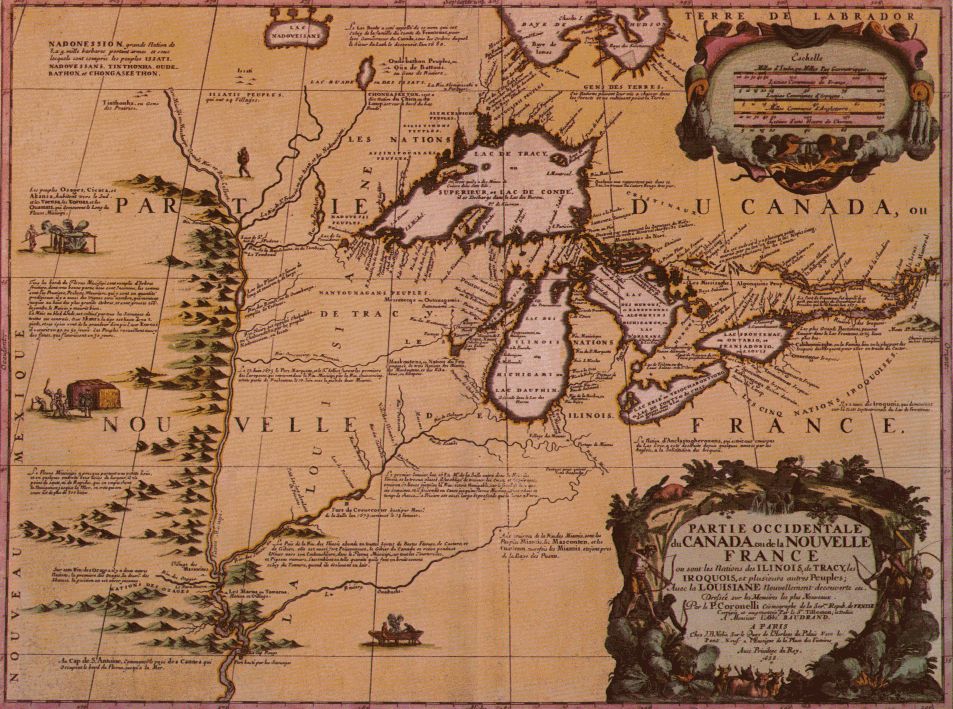TL;DR -- French-Indian War? Which one? New France? We find out more about this colonial effort by France that covered a larger area than New England.
---
Our research focus started in Essex County as Thomas Gardner was a central figure. From there, we branched to Massachusetts and surrounding areas as people moved west and south (to us, families include collateral relationships whether by blood or marriage). For instance, families from Ipswich were out in Ipswich Canada early on (puzzling, at first). Too, there were pioneers who went out to southwest Connecticut and then New Jersey. Then we got to follow families to the southern New England and then out west. Finally, we started to take a look at the groups that came in later, prior to the Revolution, and expanded our scope to "All things Gardner" somewhat. Then, we looked at families post the Revolution both in New England and across the U.S. The western expansion got a lot of our attention due to the long reach of New England throughout the States. Looking at these families led to considering events prior to the Civil War and after.
All the while, we kept ourselves to looking at English culture in the various forms here while staying within an adage for researchers here to not look over there (let's the Brits handle things). Well, that didn't last long, as we saw with the Magna Carta celebration in 2015 that groups in the U.S. were a main motivator for getting celebrations going and sustained. The ABA sponsored placement of a memorial at Runnymede.
We never looked closely at conflicts in terms of parties and motivations. Except, we did look closely at the years going back between Cape Ann and King John's time, we saw lots of conflict. Much of this was cousin quibbling.
As well, Dr. Frank noted that the leaders of the U.S. Revolution had been trained by the Crown by their involvement with the French-Indian war. Then, later, we were reminded of the Queen Anne war, basically through reading about the Pamphlet War. There is always research being done, however continuing improvements in technology will facilitate lots of work that was not possible before. Examples abound which will be included in our bibliography.
Reading of the Queen Anne war got us looking at the particulars of what went on. English-French ties are ancient, way before William I's incursion. Too, though, we started to look at the history of different areas of the U.S. where families of English heritage were moving. And, that got us reminded of other cultures. Of course, we had already discovered that there were Gardner descendants who were of American Indian heritage. The cultures that were here prior to Europe will be the basis for presentations as we go back that fill in the pieces related to events and people. This is an example (Wikipedia is probably the best curator of disparate information and views on the planet; do you support it?).
These are separated out by centuries. We have already mentioned some. Such as, Joseph Gardner being killed in the King Philips's war. He, and Ann Downey, had no progeny so they will get special attention.
But, conflict here, in the early days, also was going on in Europe. We have mentioned Spanish influences a time or two. But, there was one huge absence. Fortunately, we don't have to venture far to find a connection. New Hampshire was considered part of New France at one time. We have not paid attention to that much, seeing it mainly as where Rev Stephen Bachiler went to get away from Winthrop and friends.
So, let's correct that. First, let's use a 1681 map from Joliet's and Marquette's journey out west in 1673. That was one year prior to Thomas Gardner's death. We just looked at that, briefly, noting that they went from upper Lake Michigan to Green Bay to the Fox River and down to the Mississippi. We will have a post soon on that and an update about Gardner River further west. This map shows the Arkansas River where they turned around as they started to see evidence of Spaniards being around and about.
 |
| Map of Joliet's and Marquette's tour, 1673 |
 |
| Early view of New France |
02/27/2021 -- Further on the western rivers (and the Missouri River). Changed to using American Indian. Put in the TL;DR line. Looked at New Spain.
No comments:
Post a Comment